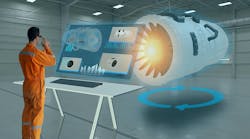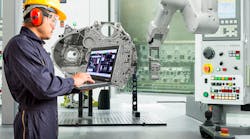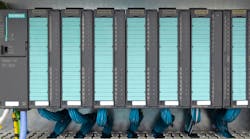For small and medium-sized manufacturing businesses (SMBs) in this new age of working, pen and paper, or even Excel are no longer getting the job done. Cloud solutions are widely understood to cut costs in the long run, increase profitability and have shown a 40% increase in operational efficiency, but manufacturing SMBs are still reluctant to adopt. Apparently this is due to the upfront costs and businesses not having sufficient skill on staff to commit to the implementation process.
However, the longer a business waits the worse off it will become, opening itself to business threats such as cybersecurity attacks, falling behind the competition, and alienating the new generation of workers.
As we have seen, especially in the last few months, AI and machine learning is a top priority for businesses around the world, and has become the biggest spend for nearly 50% of top tech executives. According to MarketsandMarkets, this market is expected to be worth $407 billion by 2027. With AI acquiring worldwide acceptance and accessibility, having recently become readily available for small business and governments, more businesses are looking for ways to also integrate AI.
Their challenge is that they cannot even think about embracing AI without first moving their activity to the cloud. The cloud allows manufacturers a single, reliable source of information, with end-to-end visibility, seamless communication and collaboration, and 24/7 access to data. Adopting a cloud solution is the first step, otherwise AI and other emerging technologies will remain out of reach.
Cybersecurity
Unfortunately for manufacturers, not all recent trends in the tech space have been positive. Since the pandemic there has been a 400% increase (4,000 per day) in cyberattacks, while MonsterCloud reported an 800% increase in ransomware attacks. And small to medium-sized manufacturers are among the most targeted businesses today. These manufacturers are heavily targeted due to the reliance on legacy systems. As 94% of companies do not survive after suffering a catastrophic data loss, there has never been a more urgent time to look to the cloud.
It is not enough to tell employees to avoid suspicious links; there must be systems in place to ensure data protection and recovery. Through cloud systems, businesses are able to uphold data-security best practices, as the data is encrypted and protected by firewalls for maximum safekeeping. This means that only certain people can access it and have that accessibility 24/7/365.
When a cyberattack occurs, no business can be transacted or work performed, and when work comes to a halt, so do payments. The business suffers and so do customers. Having data synced and operating in the cloud will ensure it is consistently backed up and managers are able to view, manage, and access it any time.
Additionally, cloud solutions require no infrastructure investments, such as servers and hardware. This reduces capital expenses, ongoing maintenance costs, IT staff support, and cybersecurity expenditures. The cloud is a cost-effective way to manage and offload patches and upgrades, and it provides a simple and efficient way to improve overall security in a short period of time.
Attracting and retaining talent
Not only has AI seen an increase in popularity but following the pandemic and welcoming this new generation into the workforce, remote work has become a highly sought-after benefit to retain and hire top talent. With 83% of workers worldwide preferring a hybrid work model, businesses must look to new systems that support this model.
Cloud solutions allow hybrid work as they provide access to real-time data, enhancing collaboration and automating routine processes as if they were sitting in an office. Cloud architecture ensures everyone has access to the latest information, practically eliminating the need for manual or in-person synchronization, as well as the sharing of files through email or other technologies.
Previously, manufacturers could not have considered hybrid or remote options for most employees, but now they offer an array of cloud-based solutions to fit their own needs and the preferences of their talent. Top talent has never been harder to find, but the manufacturing skills gap in the U.S. continues to grow and could result in 2.1 million unfilled jobs by 2030, according to Deloitte and The Manufacturing Institute. From this study, 77% of manufacturers say they will have ongoing difficulties in attracting and retaining skilled workers.
These results reinforce the need for cloud-based solutions, which can automate tasks to increase efficiency, eliminate the need for many manual processes, and make the organization attractive to new talent. Newer technology piques the interest of the incoming generation of workers, not only because it allows the manufacturer to offer a hybrid/remote work environment but also because it demonstrates a willingness to shift to today’s advanced technology and enhance overall expectations. Manufacturers must keep up with the times to appeal to a tech-native generation entering the workforce, and be ready to shift between mobile technologies seamlessly with little to no impact on the business. Cloud-based solutions close this gap easily and offer the most flexibility.
Technology, AI, and machine learning will continue to gain influence and relevance, and become more accessible. Manufacturing businesses that take the time now to adopt cloud-based systems will gain an upper hand on security and talent – and they will be able to react more readily to business changes, to advance at much faster rates, and close business faster compared to those that stick with legacy systems. For those manufacturers, the question is not “How can we adopt a cloud solution?” but “When?”
Brian Proulx is the senior director of Solutions and Channel Sales at ECI Software Solutions






